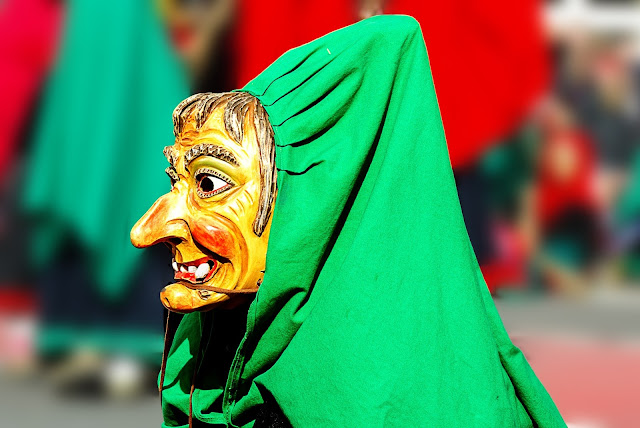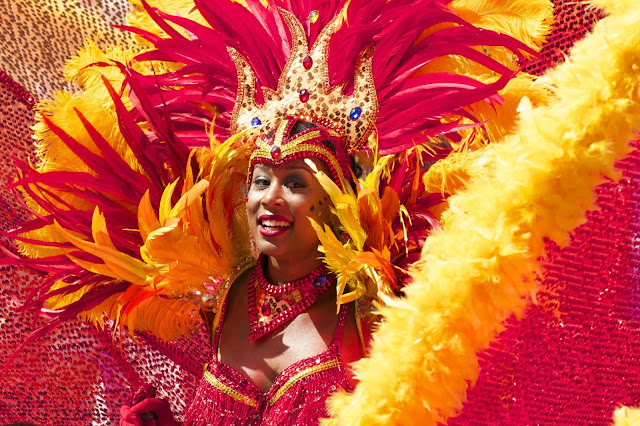Carnival Santiago De Cuba Festival | Cuba Cultures
Carnival Santiago De Cuba Festival:
At the point when the carnival starts in Santiago de Cuba, the entire city transforms into one major gathering!
The carnival of Santiago de Cuba is the biggest, most well known, and most traditional carnival in all of Cuba, and is a blast of shading, infectious drum rhythms, and move. It is likewise a period for Cubans to re-gather themselves and recall their history, group, and culture, and is often punctuated by the Cuban national occasion of July 26th.
The second greatest city after Havana, Santiago is the most intriguing city of Cuba with heaps of various ethnic gatherings having settled here finished the hundreds of years, including African, Chinese, Indigenous, French Haitian, and Spanish.
Carnival Santiago de Cuba The blend of these societies appears in the wealth of the music and move, many types of which began in Santiago de Cuba, for example, the Conga, Rumba, and Son (which later developed into what individuals call salsa today).
What most describes the carnival are the congas, which can be heard in a wide range of regions around the city. Likewise, prominent symphonies advance toward Santiago for the merriments. For the city's tenants, insofar as there is music to move to, and plenty of lagers, the carnival is a win.
History of the Carnival:
In most Roman Catholic social orders, Carnival is a celebration held quickly before Lent and celebrated in February or March.
Carnival Santiago de Cuba However the Carnaval of Santiago de Cuba is held commonly towards the finish of July. It's known to have developed from the late spring celebrations once in the past alluded to as the Mamarrachos. This Mamarrachos was hung on June 24 (St. John's Day), June 29 (St. Dwindle's Day), July 24 (St. Christine's Day), July 25 (St. James the Apostle's Day) and July 26 (St. Anne's Day).
Much of the time, the manner by which the Mamarrachos were commended really had next to no to do with the religion which gave the individual days their names. Local people utilized these dates of open occasion to celebrate in their own specific manner, and the names of holy people were kept up essentially for accommodation or maybe to make it less demanding for the frontier government to keep on allowing the style of festivity that was completed.
Maybe just on account of St. James Day, is there any conceivable connect to a religious significance in the festivals, as this Saint was embraced as the supporter holy person of Santiago de Cuba, and the dates of the modern Carnival (towards the finish of July) about dependably coincide with Saint James Day on July 25.
The correct age and sources of the Mamarrachos are obscure. "Mamarrachos" itself does not show up in composed records until 1757. The celebrations themselves are referred to have happened as right on time as 1679.
Carnival Santiago de Cuba It is perceived, notwithstanding, that the Mamarrachos of the 1800's were much more extreme and expound festivities than they are today. They included tossing items and fluids at other members (and in addition others not taking part!), traditional nourishments -, for example, ajiaco, empanadas, omelets, wastes, natural products, browned or cook pork with bubbled plantains, horse dashing, exhibitions by theater gatherings, paseo (a parade of creature drawn carriages), bonfires, conveying lights on pilgrimages to havens, utilization of the liquor, for example, aguardiente and "Yara" rum, lager, the wearing of outfits and veils, conceal balls (with unrecorded music and moving in the styles of contradanza, danza, danzon, rigadoon and waltz), verse singing in the styles known as cantos de pullas, which were melodies, that ridicule and affront others, the unconstrained parading of the comparsas, and the montompolo - which was a gigantic parade on the most recent day, that gathered together all the partaking comparsas in one major romping execution to stamp the finish of the celebrations for that year.
Before the finish of the 1800's, the bonfires, burn bearing pilgrimages, and stallion hustling had basically ceased to exist.
At the point when the carnival starts in Santiago de Cuba, the entire city transforms into one major gathering!
The carnival of Santiago de Cuba is the biggest, most well known, and most traditional carnival in all of Cuba, and is a blast of shading, infectious drum rhythms, and move. It is likewise a period for Cubans to re-gather themselves and recall their history, group, and culture, and is often punctuated by the Cuban national occasion of July 26th.
The second greatest city after Havana, Santiago is the most intriguing city of Cuba with heaps of various ethnic gatherings having settled here finished the hundreds of years, including African, Chinese, Indigenous, French Haitian, and Spanish.
Carnival Santiago de Cuba The blend of these societies appears in the wealth of the music and move, many types of which began in Santiago de Cuba, for example, the Conga, Rumba, and Son (which later developed into what individuals call salsa today).
What most describes the carnival are the congas, which can be heard in a wide range of regions around the city. Likewise, prominent symphonies advance toward Santiago for the merriments. For the city's tenants, insofar as there is music to move to, and plenty of lagers, the carnival is a win.
History of the Carnival:
In most Roman Catholic social orders, Carnival is a celebration held quickly before Lent and celebrated in February or March.
Carnival Santiago de Cuba However the Carnaval of Santiago de Cuba is held commonly towards the finish of July. It's known to have developed from the late spring celebrations once in the past alluded to as the Mamarrachos. This Mamarrachos was hung on June 24 (St. John's Day), June 29 (St. Dwindle's Day), July 24 (St. Christine's Day), July 25 (St. James the Apostle's Day) and July 26 (St. Anne's Day).
Much of the time, the manner by which the Mamarrachos were commended really had next to no to do with the religion which gave the individual days their names. Local people utilized these dates of open occasion to celebrate in their own specific manner, and the names of holy people were kept up essentially for accommodation or maybe to make it less demanding for the frontier government to keep on allowing the style of festivity that was completed.
Maybe just on account of St. James Day, is there any conceivable connect to a religious significance in the festivals, as this Saint was embraced as the supporter holy person of Santiago de Cuba, and the dates of the modern Carnival (towards the finish of July) about dependably coincide with Saint James Day on July 25.
The correct age and sources of the Mamarrachos are obscure. "Mamarrachos" itself does not show up in composed records until 1757. The celebrations themselves are referred to have happened as right on time as 1679.
Carnival Santiago de Cuba It is perceived, notwithstanding, that the Mamarrachos of the 1800's were much more extreme and expound festivities than they are today. They included tossing items and fluids at other members (and in addition others not taking part!), traditional nourishments -, for example, ajiaco, empanadas, omelets, wastes, natural products, browned or cook pork with bubbled plantains, horse dashing, exhibitions by theater gatherings, paseo (a parade of creature drawn carriages), bonfires, conveying lights on pilgrimages to havens, utilization of the liquor, for example, aguardiente and "Yara" rum, lager, the wearing of outfits and veils, conceal balls (with unrecorded music and moving in the styles of contradanza, danza, danzon, rigadoon and waltz), verse singing in the styles known as cantos de pullas, which were melodies, that ridicule and affront others, the unconstrained parading of the comparsas, and the montompolo - which was a gigantic parade on the most recent day, that gathered together all the partaking comparsas in one major romping execution to stamp the finish of the celebrations for that year.
Before the finish of the 1800's, the bonfires, burn bearing pilgrimages, and stallion hustling had basically ceased to exist.










rio carnival 2020 tickets
ReplyDeleterio carnival 2020 schedule
rio carnival 2020
rio carnival 2020 packages
brazil carnival 2020 date
carnival rio 2020 dates
rio carnival facts
rio carnival traditions